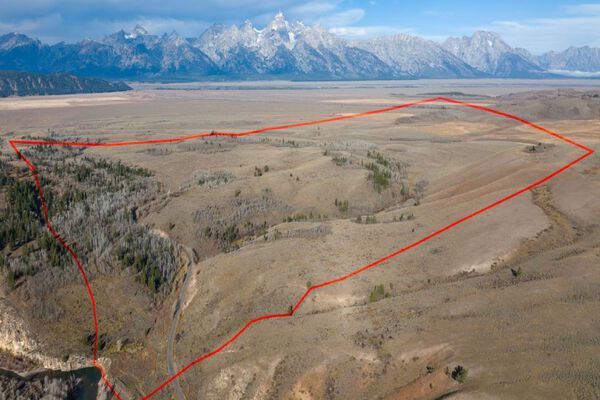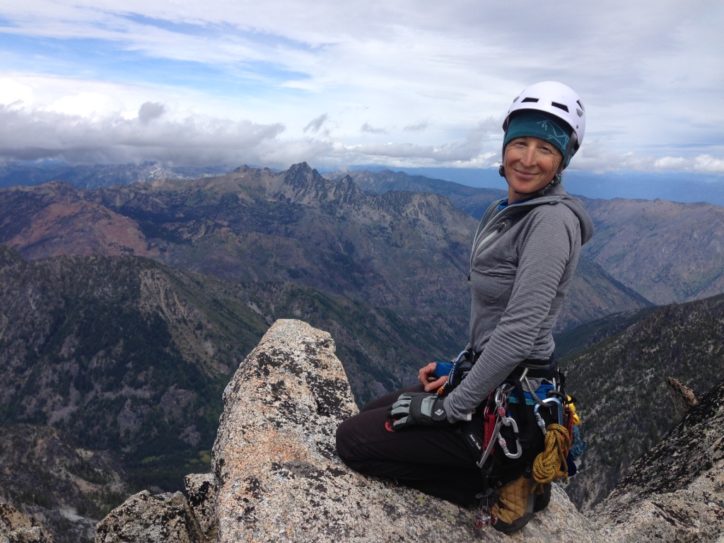My Park, My Story tells the stories of people who are passionate about Grand Teton National Park and are committed to protecting it for the enjoyment of future generations. In our eighth edition, Grand Teton National Park Biological Technician Nancy Bockino explains her enthusiasm for whitebark pine trees and love of high elevation ecosystems.
In 1995, Nancy Bockino and a college friend set their sights on summiting the Grand Teton. What now takes her a mere 8 hours to achieve took more than 3 days on that inaugural trip to Grand Teton National Park. Crediting climbing as what set her on the path she still walks (or climbs) today, Nancy has made the Tetons her permanent home for over a decade. Now she climbs for a living. Be it guiding a client for Exum Guides, training with Teton County Search and Rescue, or ascending trees for scientific study, she finds solace in the vertical world.
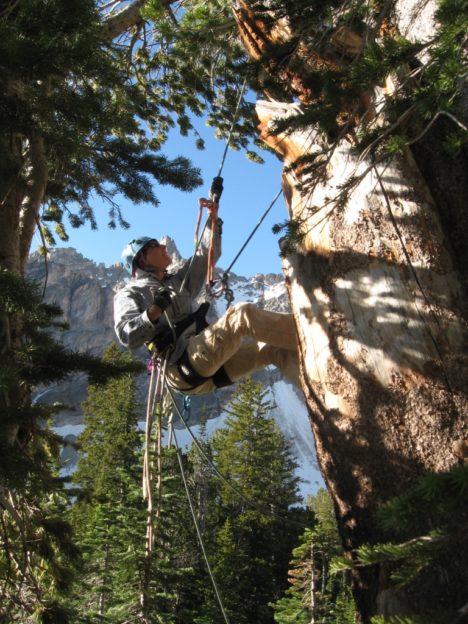
Nancy on her morning commute to the top of a whitebark pine in Grand Teton.
Before moving to the Tetons to work as a botanist in 2000, Nancy studied wildlife biology and was involved in research as far away as South America. She found that understanding animals’ habitats is critical to their protection. During her first summer as a park employee, Nancy began collecting cones from whitebark pines with blister rust to better understand how the fungus impacts the species. Blister rust damages the cambium of a tree causing a wound (known as a canker) that inhibits water and nutrients from being distributed. If a canker forms on the main stem, cone-bearing branches above it often die. Whitebark pines serve as a food source for numerous species in Grand Teton and recent, unprecedented population decline in these communities is attributed largely in part to blister rust.
Now, as a biological technician for Grand Teton, Nancy has carved a niche for herself climbing whitebark pines for seed collection and protection. Seed collection targets blister rust resistant trees which may be used in the future for replanting. “The scale of what I am doing is mismatched to the scale of what has happened to these trees,” said Nancy. Without efforts to protect whitebark pines, the population decline could worsen.
“It’s not about me, it’s about the resources. It’s about the park, it’s about the land. That’s why I’m here,” said Nancy. “I believe the whitebark pine trees are critical to the Grand Teton ecosystem for water. They collect snow in winter and shade the snow in summer so we receive slower run-off.”
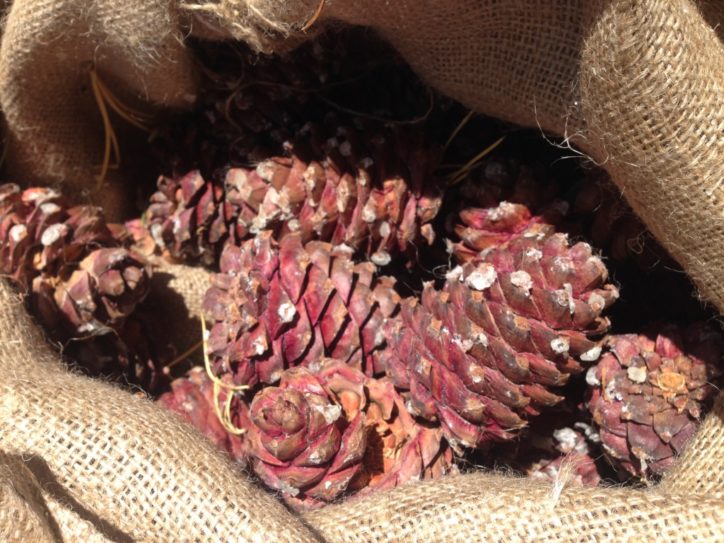
The fruit of Nancy’s labor: whitebark pine cones collected during a day’s work.
Nancy’s belief in the preservation of park resources goes beyond the trees. Her biggest concern for the future of the park is a lack of public knowledge of the delicacy of all vegetation. “Old growth sagebrush supports hundreds of species and if we don’t protect it we will change the ecosystem. Vegetation is the foundation of our ecosystem,” said Nancy.
Although particularly fond of Moose Basin and Shadow Peak Cirque, Nancy’s favorite place in the park is not a geographic location. She says her favorite place is the top of a tree. “It’s a spectacular place to spend your time. It’s like an out of body experience,” said Nancy.
When you don’t find Nancy in the trees of Grand Teton, she spends a lot of her free time in the park rock climbing, backcountry skiing, and long distance trail running. Thanks to Nancy for her dedication to Grand Teton and for sitting down with us to share her story!
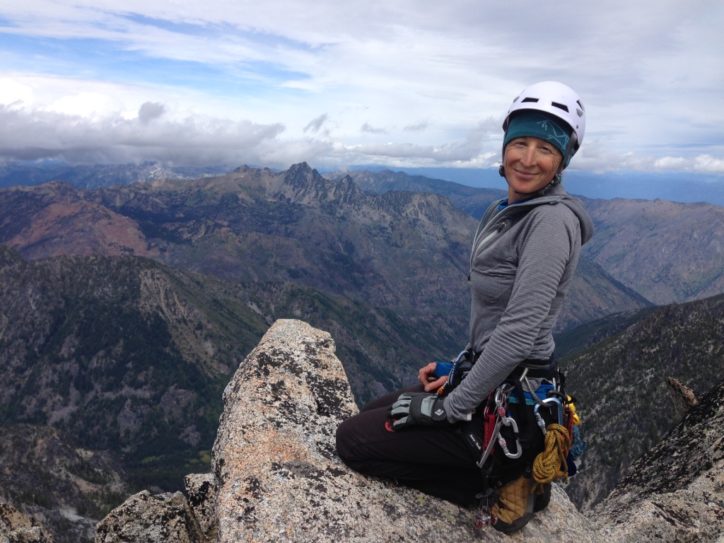
Nancy on the summit of Dragon Tail Peak in the Cascade Mountains. Photo Courtesy of Jeff Witt.









